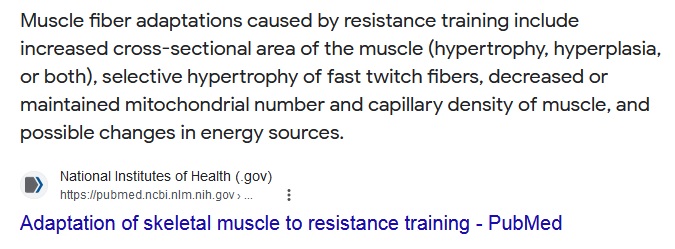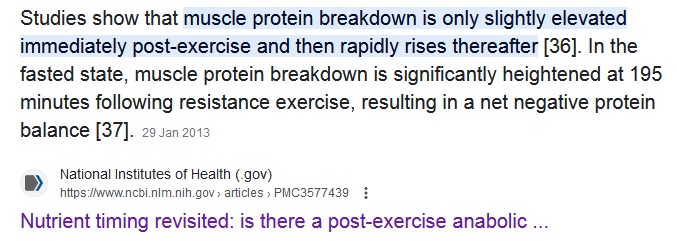9 Tips for Fast Muscle Gain
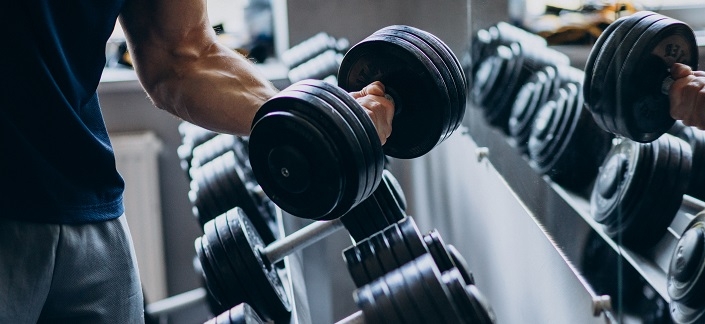
There's no doubt about it, lifting weights is therapeutic for a lot of people for a lot of different reasons.
For some, it's a way to unburden themselves from frustrations and pent-up aggression.
For others, they like the aesthetic side of muscular development and body-shaping.
And there are always those few who just want to build traps so big they elevate their t-shirts.
Not that there's anything wrong with that!
Interestingly, there's an entire body of scientific literature focused on how muscle keeps us healthy and promotes longevity.
But learning how to train and what to eat can be a daunting process when you’re just getting started.
The internet is full of opinions and super-charged ancedotes that can all add up to one big jumbled mess of contradictions at times.
If you've been training for some time, you might have found out just how easy it is to introduce bad habits.
This is why we’ve put together some fundamentals regarding exercise principles and diet to help you avoid some of the pitfalls.
This article doesn’t aim to provide you with anything sensational or any data that isn’t reflected in the scientific literature.
Sure, new programs that promise you everything while breaking the laws of physics can be exciting.
But ultimately, will they get you where you want to go?
Inch by inch, with these nine principles as a starting point, you can grow muscle in leaps and bounds.
And whether you want to gain muscle to improve your health, prevent debility in old age, to make a fashion statement or enhance your confidence, hopefully you can enjoy the process!

Check your Intensity
If you’re a beginner in the gym, you get to enjoy noob gains for months before you have to worry too much about training with intensity.
However, if you’ve been training consistently for six to twelve months, it’s time to consider the intensity with which you train.
If you aren’t sure what intense training is, check out Dorian Yates Blood and Guts or Renaissance Periodisation on YouTube to get some ideas.

This is the type of training where you lift like your life depends on it.
And from this, you typically realise that your previous training intensity left a lot to be desired.
The fact is, for most lifting weights there are always many more reps in the tank when they finish a set.
Pushing through to failure or close to it can certainly be uncomfortable and less enjoyable for some.
Simply because it hurts—a lot.
You don’t necessarily have to go this hard, though you might want to come close.
It's worth consideringa periodisation program to taper your training so you have some lighter weeks and other weeks where you give it absolutely everything.
And that’s ABSOLUTELY everything—not eighty-five per cent of everything nor ninety-five!
Here enters the care part of this section: please be cautious and careful.
Nothing halts progress like an injury.
If you feel a niggle or twinge that doesn’t feel right, just STOP!
It’s also important to ensure your body is sufficiency adapted to a new exercise before engaging with extreme intensity.
And get in your high repetition warm up set or two before high intensity sets.
So if you're up for it, mentally prepare yourself for that next session where it might get a little ugly.
It won’t be ugly when you’ve finished, though.
It will be marvellous.
If you’ve eaten recently, keep a bucket handy.
Eccentric Focused
When we say eccentric, we're not talking about that uncle that sleeps under a dream catcher and catalogues the migratory patterns of Banded Stilt shorebirds in his spare time.
We're actually talking about the muscle-lengthening or eccentric movement of each repetition.
If you're not locked into the eccentric portion of the exercise, you might be missing out on some serious muscle gain potential!
The eccentric movement is capable is stimulating muscle hypertrophy or growth, just as well as the concentric phase of the movement.
Some studies even suggest the eccentric can provide more stimulus for growth than the concentric phase.
If this makes no sense at all, it’s not you—it’s me.
Let's look at some examples.
Let’s take the standard barbell bench press and barbell biceps curl as examples.

When you’re lowering the bar to your chest in a bench press, the chest muscles are stretching/lengthening, which is the eccentric movement.
And as you explode upward with the bar, away from your body, the muscle shortens for this concentric phase of the movement.
With a biceps curl, lifting the bar upward toward your chin is the concentric movement, while lowering the bar towards your toes and lengthening your biceps is the eccentric movement.
True eccentric training requires an experienced spotter to literally apply pressure while you resist the lowering of the weight.
Though you could experiment with one-armed training, this way you have one arm free to assist with spotting.
Essentially you should be able to slow the movement of the weight, though not be able to stop it.
However, you might just find that training with a sufficiently heavy load and explosive concentric movements allows you to milk the eccentric movement, especially towards the end of your sets when your muscles are fatigued.
This might just create new stimulus for hypertrophy if you haven’t engaged in this type of training before.
And though your muscles will burn like never before, the gains will be worth it.
… because we need our glorious gains.

Hitting Daily Protein Targets
Nothing could be sexier than reaching your allotted daily protein requirement with a range of quality foods and supplements.
Or maybe that’s just me.
It’s worth remembering that resistance exercise is a potential stimulus for muscle growth, though it doesn’t facilitate the growth itself.
It’s just a stressor your muscles then need to adapt to, if they can.
And why do they want to adapt?
In an attempt at preventing the same amount of muscle damage in the future.
For this adaptation, muscle repair and growth to take place, your musculature needs your nutritional help.
Yes, your muscles are needy, from a nutritional perspective.
But if you give them what they want, you will get the glorious gains.
Without protein feeding after weight training, it’s inevitable you will get catabolic and not experience maximal gains from your training.
Unless you’re a beginner, it’s not necessary to rush for a protein source immediately after exercise.
Though it’s wise to consume a protein meal or shake as soon as it’s convenient.
Protein, of sufficient quality and quantity, is the stimulus for muscle protein synthesis to repair and rebuild your muscles.
This is the adaptation and growth phase, where you encourage your body to reap the rewards of your training.
All of that lifting and slogging it out in the gym when at times you’d probably rather be sinking a cold ale or catching up on your favourite series needs to be rewarded with protein.
The range is around 1.4-2.0 grams per kilogram of bodyweight per day, calculated based on “ideal” bodyweight.
For the protein calculations, here’s a tip most forget.
If you’re carrying excess fat mass, let’s say 20kg, then deduct this from the equation otherwise you will end up with an unnecessarily high daily protein requirement.
Some do take their protein intake higher, which may be helpful during fat loss programs to preserve muscle mass.
The International Journal of Sports Nutrition indicated in their “protein and exercise” position stand, that intakes above 3g per kg per day may even be beneficial to promote fat loss in resistance trained individuals.
So for an 100kg person, who needs to be around 80kg or so, this could be 240g of protein per day or higher.
Hitting your protein target it essential for adapting favourably to your training.
This quality protein also provides abundant essential amino acids for the wide range of crucial roles they play in the human body.
Taking it a step further, it’s also important to consider protein portion distribution throughout the day as well as the total leucine content of your meal, especially if you’re eating primarily or completely plant-based.
Counting Leucine
Leucine first became popular when it was included in BCAA drinks and sports beverages around the world, used by some of the finest athletes.
Then leucine’s status got pumped up even further with the discovery of mammalian target of rapamycin (mTOR).
And rightly so.
mTOR initiates muscle protein synthesis, the very essence of anabolism.
However, it’s just a trigger and needs to be backed up by adequate essential amino acids from quality protein foods.
Though supplementing with leucine alone triggers mTOR, there will not be enough essential amino acids to follow through for a robust anabolic effect.
Research suggests that around 2.5 to 3 grams of leucine is required per meal to trigger mTOR and initiate protein synthesis.
Thirty grams of whey protein concentrate contains around this quantity, depending on how many other additives are in the product, such as cocoa and flavours.

A large whole egg (50g) contains approximately 0.55g leucine, while 150g plain yoghurt contains 0.53g.
If you wanted to enjoy four eggs for breakfast with a piece of sourdough toast, fried mushrooms and tomato, followed by 150g plain yoghurt with mixed berries, you can be sure that your leucine intake would be adequate.
And it’s not a bad nutritional way to start the day either.
But let’s hypothesize you only have two eggs left for the aforementioned meal.
The same breakfast with only two eggs will leave you a little short on leucine.
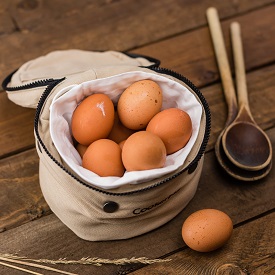
This means, likely no mTOR trigger and no switching on the anabolic muscle machinery.
However, if you have a pure leucine or branched chain amino acid supplement handy you can top up to reach the required amount.
In this case, you only need 1 gram of pure leucine or 2 grams of a 2:1:1 BCAA pure powder.
Essential amino acids would obviously work as well, as long as you check the leucine content and supplement accordingly.
Keeping track of your leucine intake is more important if you tend to under consume protein for some meals of the day or follow a vegan eating plan.
If you stick to this rule, prepare for some cracking muscle gains and exercise adaptations!
Consistency is Everything
Starting a new program, group challenge or new gym can create plenty of motivation to train with regularity.
It’s almost like you don’t even have to try to be enthusiastic.
It doesn’t take long, however, for the exercises to become routine and the workouts somewhat tedious.
Instead of looking forward to that time of the day, you might find yourself wondering how much it would really matter if you skipped your next session.

This can be especially true if you’re lacking sleep, are over-stressed or not eating as well as you could be.
Let’s face it, life can deliver a swift kick to the diaphragm when you least expect it.
And at times, motivation to exercise can evaporate as quickly as it arose.
The monotony of resistance exercise can ruin great programs that still have plenty to offer you and your long-term health and gains.
Sometimes, simply not seeing the results we want fast enough can detract from motivation.
It’s worth mentioning though, that sticking to your training schedule with unshakeable consistency is essential!
This is what stops most people from attaining the gains they desire and the physique they want.
It’s not that they don’t have a million dollar home gym or thousand dollar an hour personal trainer or a special training program containing fashionable exercises.
It’s simply that they do not train consistently enough.
Natural muscle gain does take time, even with quality nutrition and an optimised lifestyle to support recovery and growth.
So patience and persistence are certainly prerequisites to solid muscle gains.
Psychology is an important part of adhering to long-term exercise programs, though you don’t necessarily have to see a shrink.
You may want to try looking at your training with fresh eyes, especially when the approaching session looks tedious and uninteresting.
It can be helpful to consider how you will feel when you finish the session, rather than how you feel thinking about doing it.
How will your emotional experience differ when you’ve finished?
It may also be worth contemplating what it would be like to attain your ultimate performance or physique goals!

Muting Distractions
This is where home gym heroes have got it made!
While training at home, you can pull a face that truly expresses the inner agony of a set done to absolute completion, milking every eccentric movement for every last muscular ATP molecule.
And it can be done it without on-lookers, bystanders or people waiting for the equipment you’re training on.
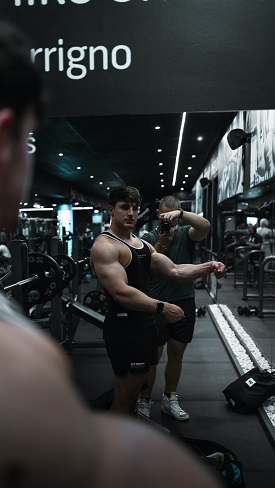
Though the social aspect of gyms can certainly be important for some, at times it can make it hard to perform at your peak.
A planned 45 minute session can easily turn into 2 hour one when you’re catching up with friends between sets.
If this is really interfering with your training, you may want to consider changing up your training time, such as hitting it nice and early or late if you’re a night owl, and scheduling in some proper socialising time outside of the gym.
Equally, the impact of social media and mobile phones in general on your training could also be considered.
Technology can provide a whole new level of distraction that golden era bodybuilders didn’t have to deal with.
Posing for a pic or making social media posts mid-workout can shift the focus from training goals to marketing your life within the digital world.
So if you really want to get through your session in style, try ignoring your phone for anything other than emergencies and perhaps consider home gym time or changing your training time to a more quiet time.
Bye-Bye Ego Lifts
If you’re not familiar with the ego lift, it’s where maximum bar-bending weight is lifted for an epic single repetition that will make even your neck veins stand out.
It doesn’t take a genius to realise that the heavier the load the higher the risk of injury.
And if there is one thing that will detract from long-term muscle gains, it’s an injury!
Sure, heads may turn in your general direction for a short period of time while you move mountains.
And though you may feel like an undiscovered avenger, it’s important to consider if these types of lifts are really necessary.
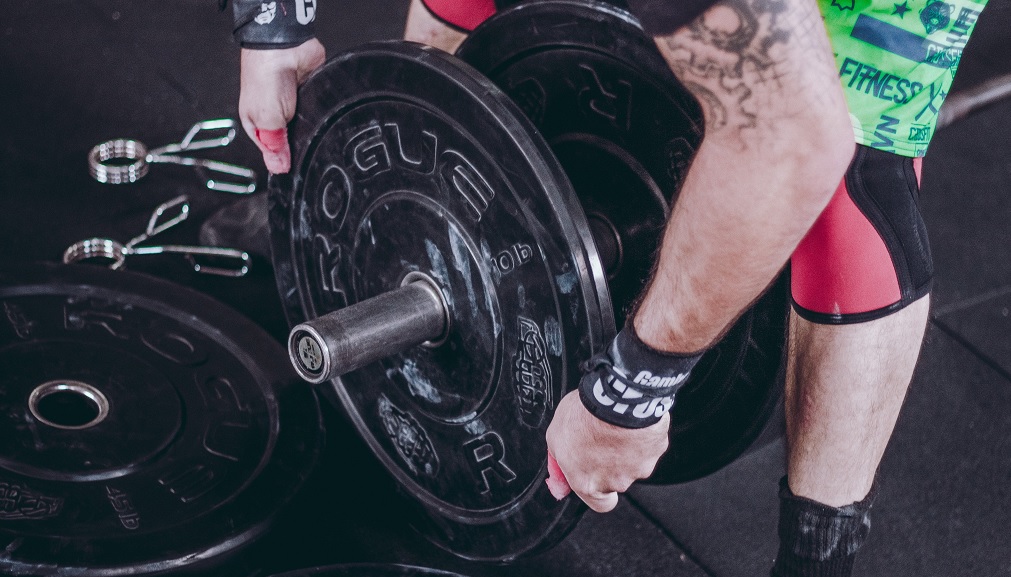
Anything that puts the future of your weight training at risk not only puts your long-term health at risk, but also your hard earned muscle.
This is because muscle mass is such an incredibly important predictor of health and wellness, especially as we age.
Sure, performing a biceps barbell curl with a twenty kilogram plate on each end of the bar will look bad-ass, especially at Snap Fitness.
But think about it this way.
If you stick to your guns and train consistently for years, you might just reach a period in time where you can pump that type of weight out for reps with much greater safety.
That’s the beauty of acquiring greater size and strength by adhering consistently to a program over time.
So it might be worth loading up the barbell with some smaller plates and taking your reps to the max while with a slow eccentric movement.
As your muscles grow, in time they will strengthen, and you will become a much more impressive-looking specimen anyway.
Then, when you pump out those epic barbell curls, with all of the weight you could gather up in the vicinity, heads will turn and jaws will drop.
Multiple Protein Feeds
If you want to maximise the muscle-building benefits of your dietary protein, there are lower caps and based on the available science thus far, upper limits as well.
Of course, these figures always differ slightly according to the size of the person as well as the activity level and how much muscle mass they have.
So we’re going to have to speak in generalities here.
Have you ever heard someone say “you can’t absorb more than 30 grams of protein”?
But they don’t just say it, they dogmatically infer it as if it’s some sacred golden rule or profound truth that has been tried and tested by science for eons?
This is one of those myths that have been known for many years to be simply untrue.
Just think about how much dietary fat and carbohydrates we can digest and absorb, allowing the human body to accrue a seemingly unlimited amount of fat mass.
So why would there be some arbitrary absorption figure relating to protein?
Well, there isn’t …
The human body can digest and absorb large amounts of protein.
The question is, at what point does more ingested protein not crank up muscle protein synthesis any further?
I.e., is there an anabolic ceiling for a quality protein source?
So far, the science is indicating that there is.
And that figure is around the 50g to 60g mark for most people.
That’s right, you can consume perhaps up to 60 grams of protein to maximise the anabolic response to protein, elevating muscle gain.
Let’s say you’re consuming 0.8g protein per pound (of ideal) bodyweight.
If you’re 100kg (220lb), and you’re carrying some excess fat mass approximated to be 10kg, then your daily protein calculation is: 0.8 x 198 = 158g
To keep it clean, let’s say your daily protein requirement is calculated to be 160g.
If you split this up into three meals, containing 50g, 50g and 60g, then you shouldn’t miss out on much protein induced muscle anabolism.
However, if you’re intermittent fasting, the scenario can change quite quickly—and this isn’t to take a dig at this dietary method.
As with all diets, if they help you eat healthier, keep your energy intake in check, protein and fibre intakes nice and high, and all that other dietary good stuff, that’s excellent!
In this case, with intermittent fasting, let’s say you’re eating window allows for two large meals.
Then you’re protein intake would need to be around the 80g mark per meal to hit your daily target of 160g.
Such a large protein meal will limit your body’s ability to utilise that digested and absorbed protein for muscle repair and building, as it can only use so much at one time.
It’s not that you can’t digest and absorb the full 80 grams, rather than your muscular anabolic machinery can only work with so much at one time.
If you are heavily muscled and your protein needs are well over two-hundred grams daily, you might find that at least four meals daily containing a similar protein content is ideal.
Just remember, it ain’t a protein meal unless it contains at least 30 grams of protein and 3 grams of leucine.
That’s easy to remember, right?
Thirty and three.
30 and 3.
You got this!
Slight Calorie Surplus
Unfortunately, gaining muscle isn’t about eating every single calorie that crosses your path, as you become a black hole that no tasty morsel can escape.
This approach will likely end up with the same amount of muscle gain as a slight calorie surplus, yet with more fat mass.
And when you need to lose that fat mass, you will likely lose some muscle along with it.
So, you might as well just keep the gains as lean as possible with a slight calorie surplus.
What’s a slight calorie surplus?
It’s around the 5% to an absolute maximum of 20%.
So if your daily maintenance calories are 3,000 calories, then an additional 10% will take you to 3,300.
This will keep you in an ideal calorie surplus for muscle gain, with the additional calories fuelling your training and supporting recovery.




